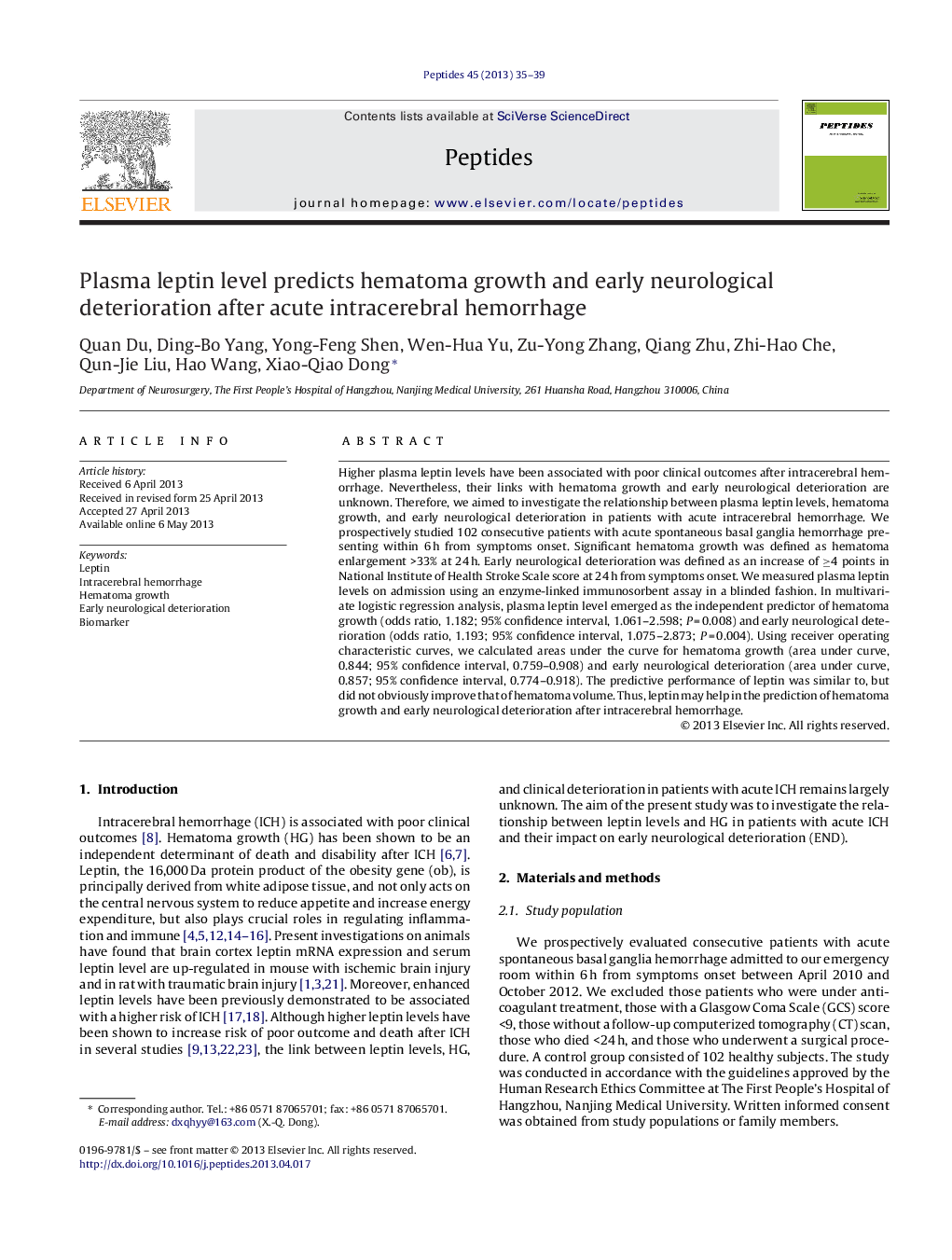| Article ID | Journal | Published Year | Pages | File Type |
|---|---|---|---|---|
| 8348665 | Peptides | 2013 | 5 Pages |
Abstract
Higher plasma leptin levels have been associated with poor clinical outcomes after intracerebral hemorrhage. Nevertheless, their links with hematoma growth and early neurological deterioration are unknown. Therefore, we aimed to investigate the relationship between plasma leptin levels, hematoma growth, and early neurological deterioration in patients with acute intracerebral hemorrhage. We prospectively studied 102 consecutive patients with acute spontaneous basal ganglia hemorrhage presenting within 6 h from symptoms onset. Significant hematoma growth was defined as hematoma enlargement >33% at 24 h. Early neurological deterioration was defined as an increase of â¥4 points in National Institute of Health Stroke Scale score at 24 h from symptoms onset. We measured plasma leptin levels on admission using an enzyme-linked immunosorbent assay in a blinded fashion. In multivariate logistic regression analysis, plasma leptin level emerged as the independent predictor of hematoma growth (odds ratio, 1.182; 95% confidence interval, 1.061-2.598; P = 0.008) and early neurological deterioration (odds ratio, 1.193; 95% confidence interval, 1.075-2.873; P = 0.004). Using receiver operating characteristic curves, we calculated areas under the curve for hematoma growth (area under curve, 0.844; 95% confidence interval, 0.759-0.908) and early neurological deterioration (area under curve, 0.857; 95% confidence interval, 0.774-0.918). The predictive performance of leptin was similar to, but did not obviously improve that of hematoma volume. Thus, leptin may help in the prediction of hematoma growth and early neurological deterioration after intracerebral hemorrhage.
Related Topics
Life Sciences
Biochemistry, Genetics and Molecular Biology
Biochemistry
Authors
Quan Du, Ding-Bo Yang, Yong-Feng Shen, Wen-Hua Yu, Zu-Yong Zhang, Qiang Zhu, Zhi-Hao Che, Qun-Jie Liu, Hao Wang, Xiao-Qiao Dong,
